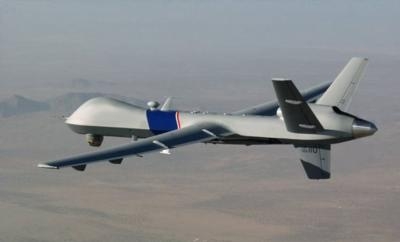Fri, Jun 03, 2016
Test Program Validates Long-Endurance Capability
General Atomics Aeronautical Systems has announced the longest endurance flight of the Predator B/MQ-9 Reaper Big Wing aircraft, a next-generation derivative of the combat-proven Predator B RPA.

“This long-endurance flight demonstrates Predator B Big Wing’s game-changing potential for providing life-saving persistent ISR [Intelligence, Surveillance, and Reconnaissance] in support of U.S. and coalition warfighters,” said David R. Alexander, president, Aircraft Systems, GA-ASI. “Our company continually strives to extend Predator B’s already impressive endurance further, pushing the aircraft’s capabilities to its full potential.”
The recent endurance flight is a continuation of a test program that began on February 18th at GA-ASI’s Gray Butte Flight Operations Facility in Palmdale, Calif. The most recent flight proved Predator B Big Wing’s ability to boost flight time by over ten hours while replicating an operational mission in altitude and maneuver profile.
During the flight, Predator B Big Wing demonstrated its ability to launch, climb to an operational altitude, loiter and conduct reconnaissance maneuvers, and land after 37.5 hours without incident. A follow-on test program will be conducted to expand its flight envelope further and push its endurance profile to the limit.
Developed on Internal Research and Development (IRAD) funds, Predator B Big Wing’s wing span is 13 feet longer than Predator B and incorporates greater internal fuel capacity, increasing the aircraft’s endurance from 27 hours to 42 hours. Its bigger wings are the first components to be produced as part of GA-ASI’s Certifiable Predator B (CPB) development project, which will lead to a certifiable production aircraft in early 2018. Further hardware and software upgrades planned for CPB include improved structural fatigue and damage tolerance, more robust flight control software, and enhancements allowing operations in adverse weather.
Predator B Big Wing also offers short-field takeoff and landing performance, as well as active lift spoilers on the wings which enable precision automatic landings. Its wings have additional hard points for carrying external stores and provisions for a leading-edge de-icing system and integrated low- and high-band Radio Frequency (RF) antennas.
An earlier version of Predator B Big Wing featured two wing-mounted fuel tanks and is currently operational with the U.S. Air Force as MQ-9 Reaper ER.
(Source: General Atomics news release)
More News
Aero Linx: Transport Canada We are a federal institution, leading the Transport Canada portfolio and working with our partners. Transport Canada is responsible for transportation p>[...]
Gross Navigation Error (GNE) A lateral deviation from a cleared track, normally in excess of 25 Nautical Miles (NM). More stringent standards (for example, 10NM in some parts of th>[...]
From AirVenture 2017 (YouTube Edition): Flight-Proven Booster On Display At AirVenture… EAA AirVenture Oshkosh is known primarily as a celebration of experimental and amateu>[...]
Aircraft Parachute System (CAPS) Was Deployed About 293 Ft Above Ground Level, Which Was Too Low To Allow For Full Deployment Of The Parachute System Analysis: The day before the a>[...]
Also: 48th Annual Air Race Classic, Hot Air Balloon Fire, FAA v Banning 100LL, Complete Remote Pilot The news Piper PA-18 Super Cub owners have been waiting for has finally arrived>[...]
 ANN's Daily Aero-Linx (06.29.25)
ANN's Daily Aero-Linx (06.29.25) ANN's Daily Aero-Term (06.29.25): Gross Navigation Error (GNE)
ANN's Daily Aero-Term (06.29.25): Gross Navigation Error (GNE) Classic Aero-TV: Anticipating Futurespace - Blue Origin Visits Airventure 2017
Classic Aero-TV: Anticipating Futurespace - Blue Origin Visits Airventure 2017 NTSB Final Report: Cirrus SR22
NTSB Final Report: Cirrus SR22 Airborne Affordable Flyers 06.26.25: PA18 Upgrades, Delta Force, Rhinebeck
Airborne Affordable Flyers 06.26.25: PA18 Upgrades, Delta Force, Rhinebeck



